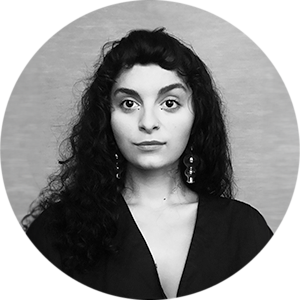
Anna Banout / artist and designer (Poland)
Graduate of the Faculty of Design at the Academy of Fine Arts in Warsaw, the Faculty of Art at the UP in Krakow and the Creative Coding course at the School of Form at the SWPS in Warsaw. In her practice, she combines design processes with cultural contexts, using objects that tell stories. She explores human-object relationships and revolves around both personal and social experiences and narratives. Her work has been repeatedly presented in group and solo exhibitions in galleries, museums and cultural institutions in Poland and internationally.
Anna will introduce us to the thematic module
Emotional relationship with things
September 29, 2023, 4:00 pm
People create things, use things, sometimes love them and sometimes hate them. They often believe that objects have a soul. It is hard to part with things that have a special meaning – they are a gift from a loved one, they are associated with a significant event. Many years ago, Anna Banout analysed, as part of her MA thesis (diploma completed under the supervision of Professor Jerzy Porębski, Faculty of Design, Academy of Fine Arts, Warsaw), what kind of things people fleeing the war in Syria take with them. This poignant study of sometimes completely irrational decisions showed the power of emotions that we humans inject into things. At the same time, there is increasing talk of consciously giving up possessions. Intense consumption, the rapid replacement of clothes and everyday objects, often forced by quality and so-called planned obsolescence, has been our reality for decades and is causing a rebellion, especially in those entering adulthood. In recent years, Professor Jonathan Chapman has written about the emotional relationships with things that translate into their longevity with users – such relationships make us unwittingly build sustainable behaviour.
The following projects will be presented as part of this module:
– Aleksandra Munzar – Home. Exercises on possession
– Michał Majdak – An attempt to define a robotic object on the example of Aibo and HC-SR04

Dr. Paweł Boguszewski / Polish Academy of Sciences M. Nencki Institute of Experimental Biology (Poland)
He is a neurobiologist, and the head of the Behavioral Methods Workshop at the Polish Academy of Sciences Nencki Institute. He studies behavioral research in models used in the elementary and biomedical sciences. His interests include mechanisms of affective and exploratory behaviors, along with their neuronal correlates and the automatization of data analysis processes. He studied biology at the University of Warsaw, picking up his PhD from the Nencki Institute, and doing a post-doctoral internship at Yale University, USA. His private passions are programming, sailing, and popularizing science.
From Anxiety to Delight – The Neurobiology of Emotions
September 29, 2023, 12:10 pm
Humans are not rational beings. Every day, coolly calculated conscious thoughts clash with unconscious processes, among which emotions take precedence. And often, it is these affective processes that determine our decisions in life, whether big or small. We mostly choose what we like, instead of what is most advantageous for us. This has a biological justification.
Emotions are the most diverse class of phenomena. We particularly see this when we try to define them, to contain them in the framework of rigorous scholarship. Here we are less than successful. Emotions include such basic feelings as fear, love, and pleasure, but also more complex phenomena like moral outrage, the joy of being in the presence of beauty, or existential dread. Emotions are deeply rooted in biology—they are the product of millions of years of the evolution of living organisms. They play a key role in the survival of people and animals. Their locus is the brain—one of the most mysterious constructs in the known universe.
Dr. Paweł Boguszewski will explain to us how the evolutionary processes of living creatures shape our emotions and what neuroscience can tell us about them.
KEYWORDS: motions, brain, neuroscience, affective processes, evolution
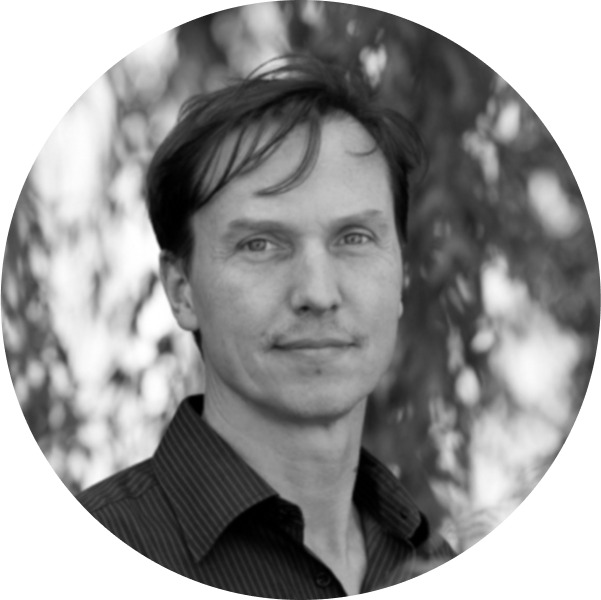
Prof. Pieter Desmet / Delft University (Netherlands)
He works as a professor of Design for Experience and head of the Human-Centered Design Department at Delft University in the Netherlands. His research focuses on understanding why and how design triggers emotions and its contribution to the well-being of individuals and communities. He supervises a research group studying various aspects of user experience and is director of the Delft Institute of Positive Design, an initiative to generate knowledge and tools to support designers in creating products and services that help people flourish.
In addition to his academic role, Pieter is partner of the research and design consultancy Emotion Studio, and chairs the International Design & Emotion Society. He has organized over ten international academic conferences on design for experience and well-being. Pieter has published over 150 scientific papers, book chapters, and books on different aspects of experience-driven design, reaching both scholars and practitioners. Outside of his research, Pieter is also committed to making a positive impact on local community projects, such as sensory wellness parks and the “House of Happiness” in Rotterdam.
Delft Institute of Positive Design: https://diopd.org/
Emotion Studio: https://emotion.studio
TU Delft: https://www.tudelft.nl/io/over-io/personen/desmet-pma
Design for Fundamental Needs: A Humanist Perspective on Design for Well-Being
September 29, 2023, 10:20 am
If one thing can be said about design, it is that its relevance to the individual and to humanity at large—its purpose, meaning, success, or failure—depends on the extent to which it satisfies human needs. Products, services, buildings, systems, and all other human-made entities are essentially instruments for need satisfaction. In his lecture, Pieter Desmet will introduce a typology of fundamental needs and demonstrate how it can inform design innovation.
This typology includes thirteen psychological needs and fifty-two related sub-needs (four for each fundamental need). It provides a practical understanding of psychological needs. In his lecture, Pieter will demonstrate how it can be used as a resource for user-centered design with a focus on happiness and well-being. The typology can support communication with clients, within design teams, with end-users, and other stakeholders. It can be used to operationalize the well-being impact of existing or new designs.
This lecture emphasizes the fact that fundamental needs are universal; everyone has them. To flourish, all our needs must be met. Design can also be inspired by these needs. For design innovation, dilemmas in particular are “golden nuggets”.
Prof. Pieter Desmet will present a typology of fundamental needs to provide a practical framework for design innovation focusing on happiness and well-being.
KEYWORDS: human needs, happiness, well-being, design innovation, typology
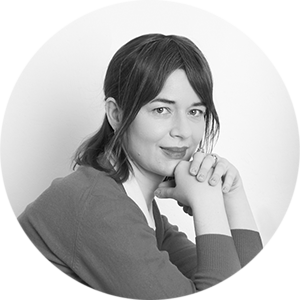
Malwina Konopacka / illustrator and designer (Poland)
She studied Industrial Design at the Academy of Fine Arts in Warsaw and illustration at the Universität der Künste in Berlin. She transferred her illustrations to ceramic objects, creating her first OKO vase design. Since then, the family of hand-painted ceramic objects such as vases, platters and plates has gradually expanded. Konopacka’s ceramic objects can be found in many private collections and in the design collection of the National Museum in Krakow. https://www.malwinakonopacka.com/
Malwina will introduce us to the thematic module
Emotion-based design
September 29, 2023, 2:00 pm
Emotions are the foundation of design. Designers need to understand the people they are designing for, they need to be able to imagine what feelings their designs will evoke in users in the future. The work of Malwina Konopacka, a designer who creates her own objects from ceramics, is an example of the designer consciously using her own sensitivity to create useful objects with a distinctive aesthetic. The designer’s sensitivity, encapsulated in ceramic objects, has been spreading like a virus for years – with each object it enters the space of our private homes and nestles there. Nevertheless, this is not the only area in which emotions become the basis for design activities. This module will also present projects that courageously confront the difficult emotions that accompany mourning and explore the emotionality of non-neuro-normative people.
The following projects will be presented as part of this module:
– Agnieszka Odziemkowska – „Echo – a tool to support conversation about loss”
– Monika Dołbniak – „Beyond Words: On inclusive research methods for translating emotions and sensory needs into caring design decisions”

Dr. Halszka Kontrymowicz-Ogińska / Jagiellonian University (Poland)
A professor at the Department of Cognitive Neuroscience and Neuroergonomics at the Institute of Applied Psychology, Jagiellonian University, she graduated in psychology from the Faculty of History and Philosophy at the same school. In 1979-86 she was a psychology consultant at the Ergonomics and Industrial Design Studio at IOS Krakow; for the next twenty-five years she was affiliated with the Department of Ergonomics at the College of Medicine, Jagiellonian University, where she conducted research in chronopsychology and work-related stress and courses for students of the Faculties of Medicine and Health Studies. Since 2011, she has been running courses on the psychology of time, psychology of emotions, and psychology of pleasure at the Institute of Applied Psychology.
She has prepared and coordinated a focus module, “Psychology and Environmental Design – from Ergonomics to UX.” She has been an academic supervisor for over 140 psychology diploma projects, as well as those in neurobiology and cognitive science. She takes part in neuropsychology and chronopsychology study projects. Her present interests include the effects of sleep deprivation, particularly with regards to how the brain’s reward system works, and the specifics of hedonic experiences. She has written or co-written over eighty publications. She has served for over a dozen years as a consultant in psychology and cognitive ergonomics for students and employees of the Faculty of Industrial Design at the Academy of FIne Arts in Krakow. She is also a member of the Krakow Branch of the PAN Psychology Commission and the Polish Ergonomics Society.
Designing Pleasure
September 29, 2023, 11:30 am
For over two thousand years, pleasure, a basic positive emotion, has had a bad reputation. And asceticism, or the denial of pleasure, has always been considered a virtue, worthy of admiration and recognition. This is not the right path. Pleasure is the basis of a normal, healthy life. Losing the capacity to feel pleasure is anhedonia, a key symptom of all affective disorders.
We can prove that pleasure makes us kinder to others, more creative and healthy. It is slowly becoming a recognized research subject, and increasingly we say that it should be central to “affective neuroscience.” Neuroscience also shows that there is no essential difference between “lower” and “higher” pleasures. All good things, from the simplest sensory experiences (e.g. tastes) to social relationships, to abstract ones, intellectual or aesthetic, activate the reward part of the brain. It can also be pleasant to pursue one’s values, and finding meaning is the greatest of pleasures.
A product is a bearer of a message and a part of a social relationship—between its maker and its user. Good emotions enclosed in an object arouse a sense of comfort, of being cared for, and being special and important. Mechanisms that make good emotions in relationships with objects are complex and diverse—from “sentiments” (familiarity, nostalgia, sensitivity), to “snobbery” (attachment to a brand, the expression of values, ideas, identities) or “satisfaction” (a sense of being in control of one’s actions, a state of flow, recognition of the designer’s intelligence).
Holistic ergonomics presently aim to recognize and satisfy the user’s needs on three levels: safety, comfort, and hedonic experience (sometimes equated with aesthetics, but this is something more). I would hazard the statement that if a design does not consider pleasure of usage, it cannot be called ergonomic.
Dr. Halszka Kontrymowicz-Ogińska speaks of the pleasure that designers enclose in objects to have a positive impact on social relationships, creativity, and health.
KEYWORDS: pleasure, relationships with objects, neuroscience, hedonia, ergonomics

Katarzyna Ogińska-Bruchal / psychologist and user experience researcher (Poland)
Graduate of Applied Psychology at the Jagiellonian University. Human communication with technology is at the center of her interests. She deals with communicative competence, emotions and personality design of bots. She works for Lekta AI, a Polish startup that creates conversational solutions based on artificial intelligence. She is a lecturer in psychology and consultant at the Faculty of Industrial Forms at the Academy of Fine Arts in Krakow. She cooperates with the Institute of Applied Psychology at the Jagiellonian University. She is a Member of the Polish Ergonomic Society.
Katarzyna will introduce us to the thematic module
Emotions and the world of new technologies
September 30, 2023, 9:10 am
Recent months have brought us an extraordinary intensification of contact with tools and solutions based on artificial intelligence, which until recently were used only by a narrow circle of experts. Today, these tools are spreading at a rapid pace. Everything new and unknown evokes different feelings – sometimes curiosity, sometimes fear. On the one hand, we cannot imagine all the possible consequences of the revolution taking place before our eyes; on the other hand, we have an extraordinary opportunity to build solutions that will serve the good of people and the planet. Katarzyna Ogińska-Bruchal – a designer specialising in designing interactions with bots, working on the interface between human feelings and the use of new technologies. Designing that touches the area of artificial intelligence requires extraordinary empathy and attentiveness to the needs and possible level of acceptance of today’s users and users
The following projects will be presented as part of this module:
– Dominika Sobolewska – „Techno-empathy in design as an expression of concern for a better tomorrow”
– Katarzyna Markowska – „A-EYE Personal monitoring device”
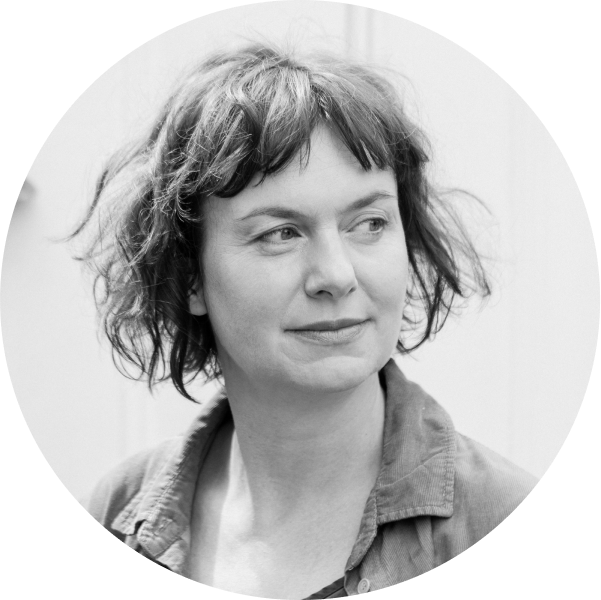
Dr. Tiffany Watt Smith / Queen Mary University of London (Great Britain)
She works as a Reader in Cultural History at Queen Mary University of London, and former Director of its Centre for the History of Emotions. She is the author of three books on the history of emotions On Flinching, The Book of Human Emotions, and Schadenfreude, and is currently working on a book about friendship, due to be published in 2024. Her research has been funded by Wellcome Trust, the British Academy, and the Arts and Humanities Research Council, and in 2019 she was awarded the Philip Leverhulme Prize. She is a regular expert contributor on BBC Radio 3 and 4, and her TED talk, “The History of Human Emotions,” has been viewed by more than four million people.
https://www.qmul.ac.uk/sed/staff/wattsmitht.html
Making Emotions Extraordinary Again
September 30, 2023, 12:20 pm
In the 1920s, industrial psychologists studied the efficiency of female workers at the Hawthorn Plant, a telephone factory in Chicago. They studied the effect of lighting, rest breaks, and what the workers ate. But they also tried to study the emotional ecology of the test room, how friendships, trust, and bad tempers affected productivity. A new scientific understanding of motivation and behavior was pioneered by them, a theory that is ubiquitous in today’s optimisation-obsessed age, namely the idea that emotions (our own and others’) can be isolated, manipulated, and monetized. Under observation, however, immigrant, working-class women showed far less transparency than white male psychologists had imagined.
This talk makes a plea for the value of the emotionally unfamiliar. We live in a world where emotional transparency is a highly prized ideal, whether in the (dangerously misguided) promise of AI facial recognition software, or in the healing potential of empathy and communication. But the reality of human emotions is that they are just as often mysterious, shy, and hard to read, and what at first feels like emotional affinity can, on closer inspection, dissolve into mysteries.
As a historian of emotion, Watt Smith is always compelled by these mysteries, and she invites us to be, too. In this talk, she will look at shifting emotional landscapes past and present, exploring how emotional styles, languages, practices, symbols, and rituals change, sometimes very dramatically, across times and places. Defamiliarizing emotions in this way reminds us of the necessity of holding diverse experiences in mind when we speak about what emotions are and do. In an age where we are growing accustomed to the flattening and universalizing of emotional experience under capitalism, coming face to face with the emotional unfamiliar reminds us that feelings have distinct and sometimes highly idiosyncratic ways of eluding us too.
Dr. Tiffany Watt Smith will discuss the complexity of human emotions by emphasizing the benefits of embracing diverse experiences and recognizing their idiosyncrasies.
KEYWORDS: human emotions, emotionally unfamiliar, mystery, emotional landscapes, defamiliarizing emotions

Tomasz Stawiszyński / Philosopher and essayist (Poland).
Philosopher, essayist, bestselling author of 'Skirmishes with Freud. Myths, temptations and pitfalls of psychotherapy”, „What to do before the end of the world”, „Escape from helplessness”, „Owl mission. Tosia, Franek and the Secrets of Philosophy”, „Meeting with Philosophy” and „Rules for the Time of Chaos”; he hosts „The Philosopher’s Hour” and „The Philosopher’s Magazine” on TOK FM radio; creator of the podcast „Skądinąd” (www.patronite.pl/skadinad) available, among others, on Spotify, Apple Podcasts and Google Podcasts; regular columnist for „Tygodnik Powszechny”; his texts and broadcasts can be found at www.stawiszynski.org
Coherence as a panacea for fear. The structure and aesthetics of conspiracy thinking
September 30, 2023, 11:10 am
Conspiracy thinking, until recently operating on the margins of public debate, has today become one of the dominant narratives in the information space – and it continues to expand. Numerous studies, e.g. conducted in 2022 by the Policy Institute at King’s College London, show that during the coronavirus pandemic, trust in public institutions in Europe declined significantly – and at the same time, belief in various forms of conspiracy theories increased. In addition, conspiracy theories are also increasingly infiltrating the mainstream media and becoming a tool of political warfare.
In this presentation, I will attempt to characterise the basic parameters of conspiracy thinking and conspiracy theories (they are only partly the same phenomena). I will show that these narratives – which have significant features of secular forms of religiosity – perform a number of functions, perhaps the most important of which is to assuage the fear of the uncertain and the unknown. The question of coherence, apparent of course, seems crucial here – both at the level of the argument and the vision of the world emerging from the conspiracy theories (the aesthetic aspect). Finally, I will consider the potential consequences of the expansion of this kind of worldview.
Tomasz Stawiszyński will characterise the basic features of conspiracy thinking and point to its social, psychological and religious functions.
KEYWORDSConspiracy theories, conspiracy thinking, counter-knowledge, alternative worldview, conspiracy, fear, insecurity

Dr. Małgorzata A. Szyszkowska / music philosopher (Poland)
Educated at the Institute of Philosophy of the Department of Philosophy and Sociology at the University of Warsaw, in 2000 she received her PhD and in 2018 habilitation. Since 2001 she has worked as a research fellow at the Music Department of Cardiff University in the UK. She worked as an academic lecturer at the University of Warsaw between 2004 and 2019, and then at the Chopin University of Music between 2019 and 2022. She has recently concluded a project, financed by the National Center of Science and is working on another long-term EU special project, Communities and Artistic Participation in a Hybrid Environment CAPHE. She assists with the graduate exams at the Chopin University of Music and teaches at the Academy of Economics and Human Sciences. Her interests span everyday aesthetics, the philosophy of music, the phenomenological aesthetics of Roman Ingarden, the critical aesthetics of Theodor W. Adorno, the phenomenology of listening, the concept and practice of deep listening, cultural axiology, and space and time in the hybrid musical experience.
The Mosaic: Feelings and Emotional Aesthetic Qualities in the Musical Experience
September 30, 2023, 1:30 pm
What feelings go with experiencing music, and how? This question has been asked on many occasions, and the answer comes through many polarized standpoints. In her lecture, Szyszkowska conducts an analysis of emotional aesthetic qualities in the experience of music, to try to grapple with the general issue of musical emotionality. Neither emotionalism and emotional cognitivism are coherent standpoints, especially in the colloquial experience, with the feelings that a listener seems to experience. Szyszkowska draws from Kate Hevner Mueller’s adjective circle to show that the more complex and diverse listeners’ emotions are, the harder it is to speak of them with regard to the experience of music.
This problem certainly goes far beyond linguistic difficulties. Hevner’s adjective circle remains a certain ideal representation of emotional reactions. Much more cohesive, both in terms of philosophy and colloquial experiences, is the standpoint of Leonard B. Meyer and the contemporary concepts based on it. These questions about feelings and the experience of music require responses both with regard to the individual and the social reception of music. A concept by Peter Kivy remains relevant and worth examining. Szyszkowska believes that the subject’s sensations in a musical experience are not easily verified in their emotional form and remain as diverse and fluctuating as a mosaic. Emotions in musical experiences create a kind of mosaic composed of overlapping emotional shapes, sometimes joining in clearly marked figures, other times falling apart into a range of individual emotions, arising from multiple emotional experiences more than recognizable consecutive separate emotional states. To present her thesis, Szyszkowska turns to works of music whose reception has initiated mosaic associations, but on the other hand makes reference to now-classical philosophical concepts to point to another understanding of the mosaic. Szyszkowska also uses the example of aleatoric music to suggest that the equivocal and dynamic nature of emotion in the musical experience best corresponds to the dynamic nature of the music.
Dr. Małgorzata Szyszkowska presents the diversity and changeability of emotions in music as an emotional mosaic whose shapes change depending on the complexity of feelings the listener experiences.
KEYWORDS: emotions, experience of music, adjective circle, mosaic

Prof. Tobias Wallisser / State Academy of Fine Arts in Stuttgart (Germany)
Tobias Wallisser is Professor of Innovative Construction and Spatial Concepts and Vice-President at the State Academy of Fine Arts in Stuttgart.
He is partner of LAVA – Laboratory for Visionary Architecture which he co-founded in 2007 with Chris Bosse and Alexander Rieck. LAVA operates as an international network from offices based in Berlin, Stuttgart and Sydney. Currently, about 100 architects work on projects in Germany, Saudi Arabia, Vietnam and Australia. As Creative Director and Associate Architect at UN-Studio in Amsterdam for 10 years he was responsible for many projects including the Mercedes-Benz Museum, Germany. He lectures at universities throughout Europe and has won many awards. Wallisser spoke at TEDxBerlin in 2010 on “Future Cities: towards a synergy of nature and technology.
More with Less — Architecture after the Anthropocene
September 30, 2023, 2:50 pm
When architect Hans Hollein curated the architecture Biennale in Venice many years ago, he called architects “seismographers of the future.” The three global mega topics of the climate crisis, housing shortage, and digitization all come together in the design of human habitats — the core of the discipline of architecture. With the human population reaching over eight billion people, the need for energy, water, and building resources is rising beyond what the planet can provide. How can we keep the planet habitable and provide good living environments for people, and for life in general? We need a shift in architectural design, from providing shelter to providing experiences, from a focus on simple tasks to more complex relationships with the Earth to achieve more with less.
The paradigm shift demands we make the “soft factors” — everything that relates to emotions and feelings — the new hard factors, the decisive criteria for decision-making. We must replace numbers and measurable quantities with visual, tactile, and other sensory qualities, together with holistic ideas about production, assembly, and reuse to determine design decisions. The flow of energy, water, and materials needs to be approached in a cyclical fashion. The combination of long-familiar techniques and materials and the use of digital tools provides new opportunities.
The Stuttgart State Academy’s course on Architecture, Innovative Construction Concepts, and Structures researches these possibilities digitally and with hands-on projects.
On a larger scale, the architectural practice of LAVA, the Laboratory for Visionary Architecture, has designed Campus Germany, the German Expo Pavilion at EXPO 2020 in Dubai, and is currently working on another pavilion, “Wa Germany,” for Osaka 2025. Whereas the focus of the former pavilion was connecting people and raising awareness of the issues at hand, the latter one will be a manifesto for construction after the Anthropocene —a fully circular building whose design illustrates the possibilities for turning limitations into opportunities.
The growing awareness of the emotional quality of structures creates both increased responsibility and new potential to contribute to necessary change. We live in exciting times!
Prof. Tobias Wallisser will discuss how architectural design can help shift the way we handle resources towards a circular economy.
KEYWORDS: architecture, circular construction, the Anthropocene, paradigm shift, emotional quality

Dr. Dawid Wiener / School of Form, SWPS University (Poland)
A doctor, cognitivist, humanities PhD (philosophy), and managing partner in the Cogision research and design company, Wiener has also co-founded several start-ups (Usabilitytools, PublishSoSimply, Attensee). He is also a teacher at the Faculty of Design (School of Form), University of Social Sciences and Humanities, where he runs or co-runs Contemporary Design Challenges, Interaction Design, Spatial Graphic Design, UX Basics, and Research in UX (the latter two as part of the „Psychology and Computer Studies” program). He has conceived a concept for anticipating emotional systems, outlined in his book Antycypacja a procesy emocjonalne. Kognitywistyczne ujęcie systemów emocjonalnych (Anticipation and Emotional Processes: A Cognitivist Approach to Emotional Systems, 2009).
The Emotional Uncanny Valley in Digital Design
September 30, 2023, 10:30 am
The Uncanny Valley Hypothesis (UVH) suggests that “almost” human artificial figures (physical or anonymous) prompt a negative sense of danger, anxiety, or discomfort in some observers. This phenomenon is fairly well described in the world of robotics, CGI (Computer Generated Imagery), and in work on Artificial Intelligence. At the same time, most of the work concerning this issue focuses on hypothetical (cognitive) mechanisms to explain the above emotional reactions in the viewer, or how engineers and/or designers could minimize this undesirable experience.
At present, with the rapid development of generative Artificial Intelligence, we may encounter a situation (or already have) in which the artificial system (AI) less attempts to morphologically resemble a human being than to communicate with them (the user, the person) to create the impression that there is a creature on “the other side,” that to some degree feels emotions or even empathy. Crucially, the development of affective and embodied systems was meant to be a fundamental step toward an advanced (common?) Artificial Intelligence, which could enter various spheres of our operations. At the same time, human emotional sensors sometimes feel that the emotions expressed by AI systems are artificial and could be behind an experience I am calling the Emotional Uncanny Valley (EUV).
Digital designers (of the future) thus stand before a challenge in which they may want to design innovative communication interfaces, potentially aimed at minimizing this affective artificiality, until the point when it ceases to bother us and/or even becomes a desirable attribute, as in Spike Jonze’s film Her of 2013. Yet they could also take another path, where co-designing with AI systems will be more essential. Then we will less be looking for “human” emotions in these interactions than designing new experiences, meanings, or emotions that will match a different profile and are exclusive to the new human/non-human relationships. This will mean bringing emotional design (with AI) into an intentionally non-anthropocentric zone, more-than-human emotional design, in which speaking of the Emotional Uncanny Valley will no longer make much sense.
Dr. Dawid Wiener will discuss how an advancement of generative artificial intelligence will allow designers to transcend the concept of the Emotional Uncanny Valley.
KEYWORDS: artificial intelligence, digital design, human/non-human interactions, Emotional Uncanny Valley
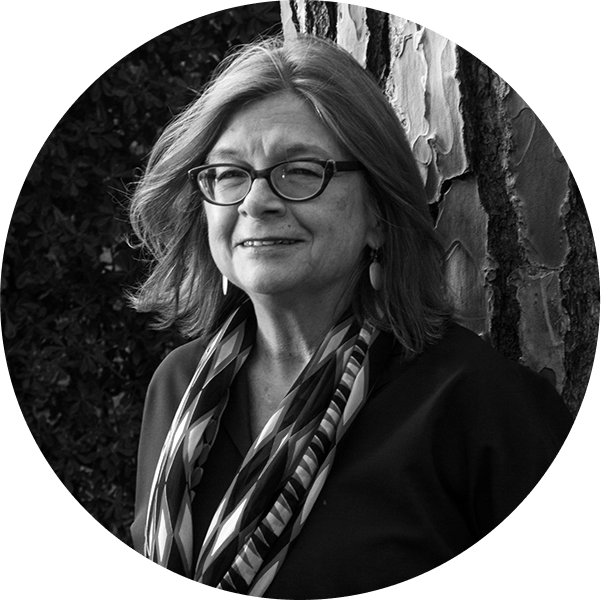
Prof. Susan Yelavich / Parsons School of Design, The New School (United States of America)
Susan Yelavich is Professor Emerita, Design Studies, Parsons School of Design, The New School. A Fellow of the American Academy of Rome and the Bogliasco Foundation, she is also a member of the Scientific Committee for Design at the Politecnico di Milano and has taught at the in Democracy and Diversity Institute in Wroclaw. Her contributions to design and its scholarship span over four decades, including 25 years at Cooper Hewitt Museum. During that time she has published and lectured widely. Among her books are Thinking Design through Literature (Routledge, 2019), Design as Future-Making (Bloomsbury, 2014), and Contemporary World Interiors (Phaidon, 2007).
Design and Comedy: Laughter as Criticism and Therapy
September 29, 2023, 3:20 pm
Having been erroneously marginalized, as comedy always is, the work of design’s tricksters is overdue for a considered appraisal. This lecture will look at design that uses humor tactics—including incongruity, absurdity, and exaggeration—to trigger emotional responses as an alternate means of critique. Ranging in intent from calculated schadenfreude to pleasure-giving surprises, design that operates through comedy can work as a sudden shock or a slow burn that tells the brain and body that something is amiss. Either way, design that is comically unpredictable liberates us from the tyranny of the status quo and offers an antidote to complacency. After setting the stage with historical examples from twelfth-century English puzzle jugs to eighteenth-century giochi d’acqua (“surprise” fountains), this lecture will focus on the work of contemporary design “comedians,” such as Anna Barbara, Constantin Boym, Elio Caccavale, Ana Mir, and Tobias Wong. It will also pay respect to the anonymous pranksters among their ranks who make us think while we are laughing.
Prof. Susan Yelavich will look at design that uses humor tactics to trigger emotional responses as an alternate means of critique and therapy.
KEYWORDS: comedy, design, humor tactics, emotional responses, critique, therapy

